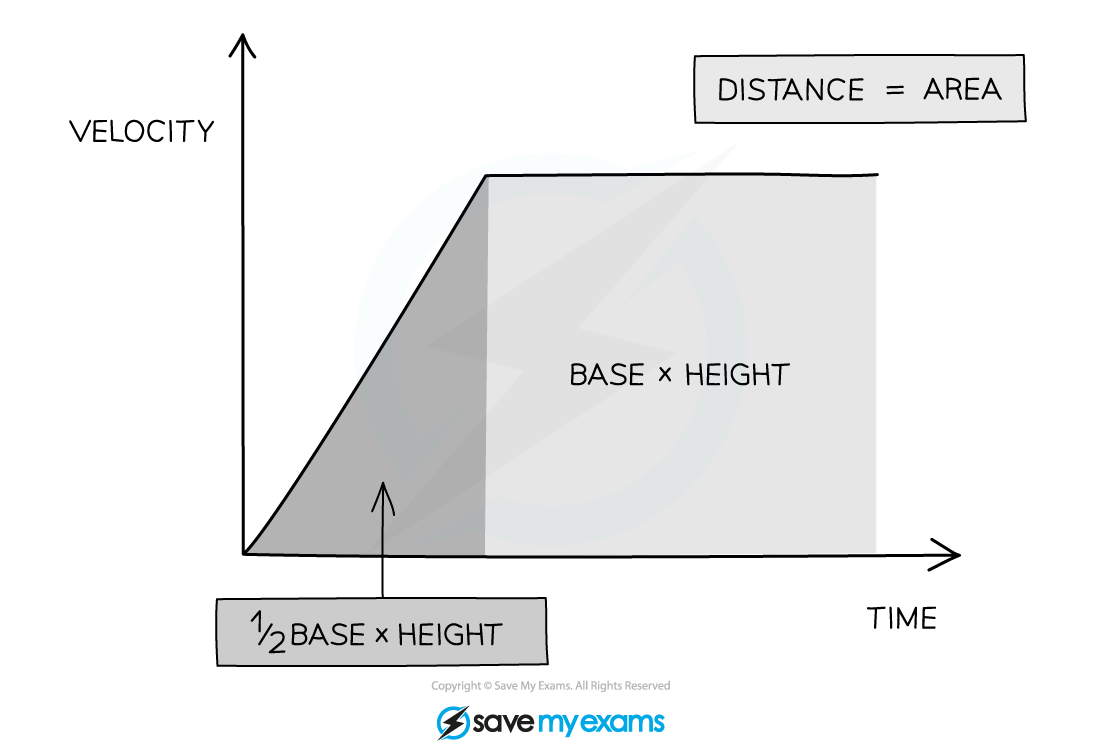Velocity-Time Graphs
- A speed-time graph shows how the speed of an object varies with time
- A velocity-time graph shows how the speed of an object moving in a certain direction varies with time
Acceleration & Deceleration on a Speed-Time Graph

The red line shows the speed of an object increasing over time, whilst the green line shows the speed of an object decreasing over time
Acceleration on a Velocity-Time Graph
- The slope of the line represents the magnitude of acceleration
- A steep slope means large acceleration (or deceleration)
- The object's velocity changes very quickly
- A gentle slope means small acceleration (or deceleration)
- The object's velocity changes very gradually
- A flat line means the acceleration is zero
- The object is moving with a constant velocity
- A constant velocity means a constant speed in a straight line
- A steep slope means large acceleration (or deceleration)
Interpreting Gradients on a Velocity-Time Graphs

This image shows how to interpret the slope of a velocity-time graph
- The acceleration of an object can be calculated from the gradient of a velocity-time graph
Calculating Gradient of a Velocity-Time Graph

How to find the gradient of a velocity-time graph
Worked example
Tora is training for a cycling tournament.
The velocity-time graph below shows her motion as she cycles along a flat, straight road.

(a) In which section of the speed-time graph is Tora’s acceleration the largest?
(b) Calculate Tora’s acceleration between 5 and 10 seconds.
Answer:
Part (a)
Step 1: Recall that the slope of a speed-time graph represents the magnitude of acceleration
- The slope of a speed-time graph indicates the magnitude of acceleration
Therefore, the only sections of the graph where Tora is accelerating is section B and section D
- Sections A, C, and E are flat – in other words, Tora is moving at a constant speed (i.e. not accelerating)
Step 2: Identify the section with the steepest slope
- Section D of the graph has the steepest slope
- Hence, the largest acceleration is shown in section D
Part (b)
Step 1: Recall that the gradient of a speed-time graph gives the acceleration
- Calculating the gradient of a slope on a speed-time graph gives the acceleration for that time period
Step 2: Draw a large gradient triangle at the appropriate section of the graph
- A gradient triangle is drawn for the time period between 5 and 10 seconds below:

Step 3: Calculate the size of the gradient and state this as the acceleration
- The acceleration is given by the gradient, which can be calculated using:
acceleration = gradient = 5 ÷ 5 = 1 m/s2
- Therefore, Tora accelerated at 1 m/s2 between 5 and 10 seconds
Exam Tip
Use the entire slope, where possible, to calculate the gradient. Examiners tend to award credit if they see a large gradient triangle used - so remember to draw 'rise' and 'run' lines directly on the graph itself!




